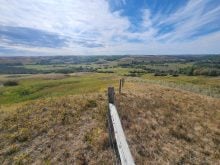REGINA (Staff) — If you’ve sold cattle to a neighbor or a relative, international marketing is easy, producers heard at the recent Saskatchewan Bull Congress.
Sydney Palmer, owner of Canadian Display Centre at Marsden, Sask., said, “you have to break those barriers of the they’re-so-far-away-so-I-can’t-do-it mentality.
“Just treat people like you want to be treated.”
Don’t assume
Knowing the customer and the product they want is most important. Don’t assume you know what they want, Palmer said.
“We tend as Canadians … to want to sell them what we want to sell, not what they want to buy.”
Read Also

Pakistan reopens its doors to Canadian canola
Pakistan reopens its doors to Canadian canola after a three-year hiatus.
Palmer, who has sold bulls to Australia and China, also said product should not be priced so high that the vendor can’t afford to service it.
He offered a number of practical tips on assembling cattle and preparing for international visitors. For example, buyers usually have a set amount to spend.
“Show no more than what we’ve asked for,” Palmer said. Offering cattle out of the price range just confuses the issue, he said.
Government trade missions can be real door openers in some countries, Palmer said. But he cautioned against expecting results after just one trip.
“Your first trip is wasted. It’s a public relations trip only.”
Palmer said he spent $25,000 in China over a two-year period before getting a cheque back.















